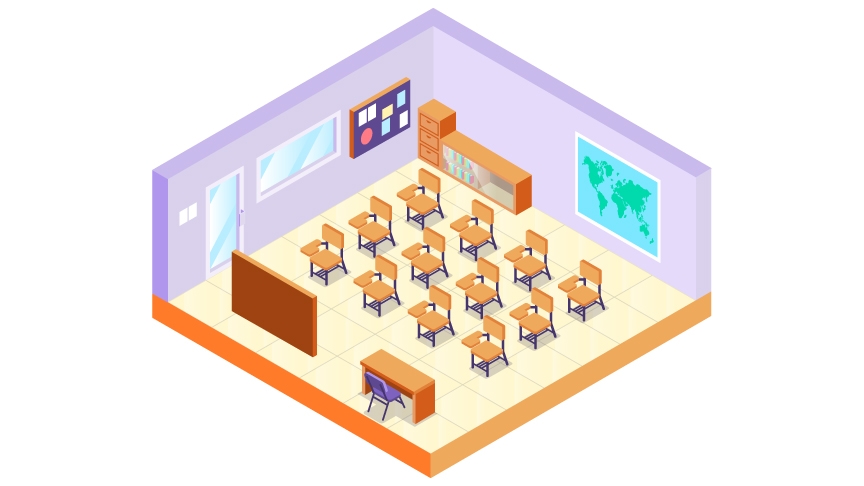Meetings
Training Room Setups (How To Accommodate Different Learning Styles)
Shyam Nagarajan / Reading Time : 4 mins
When designing a training room, it's important to recognize that each participant has their own preferred way of learning new information. Some absorb material best through listening to lectures and discussions. Others prefer seeing concepts visualized on screens or whiteboards. And still others learn better through hands-on activities and moving around the space.
This article will provide tips on how to create a dynamic, stimulating training space suitable for visual, auditory, and kinesthetic learners alike. We'll cover the key considerations around seating, lighting, sound, design elements, and technology integration.
"Create versatile training spaces with adaptable seating, optimal lighting, and sound management to cater to various learning preferences."
Ideal Training Room Setup
The most effective training rooms are flexible environments that can adapt to diverse learning styles. Rather than taking a one-size-fits-all approach, trainers should think about how lighting, seating arrangements, acoustics, color schemes, and technology access can be optimized for all trainees. The room itself should enhance the training experience, keeping participants energized and engaged.
Let’s look into each of these aspects in detail.
Seating Arrangements for Diverse Learners
Seating arrangements have a surprising influence over the learning experience. Open spaces with movable chairs are ideal for reconfiguring groups on the fly, whether you want intimate teams or a large assembly. Consider a mix of lightweight stacking chairs, softer armchairs, standing desks, and high-top tables or counters. This variety encourages movement while supporting both interaction and focused work.
Kinesthetic learners appreciate the ability to transition between different postures and locations. Have plentiful space for reorganization activities, roleplaying exercises or simulations. Auditory learners may want to face the speaker directly, while groups of visual learners can gather around monitors to analyze charts or footage.
Movable whiteboards on wheels can also be incorporated for spontaneous collaboration. Just be sure not to overload the room—leave aisles and open areas so activities can easily flow from one setting to another.
Optimizing Lighting for Engagement
Lighting has a significant impact on participants' energy levels and ability to concentrate. Florescent overhead lights can contribute to eyestrain while natural light from windows is invigorating. Ideal training rooms blend ample natural light with adaptable artificial lighting solutions.
Install dimmer switches to control the mood and illuminate different zones. Bright full-room lights work well for group lectures and discussions. Dimmable track lights, lamps and pendant fixtures provide localized pools of light for small group work. Position lights to avoid glare on screens and whiteboards.
Sudden shifts from bright light to darkness can disrupt learners' circadian rhythms. Use blackout curtains and shade adjustments at windows to block intense midday light if needed. Place lights at optimal angles to avoid shadows and support visual tasks like reading handouts or taking notes. A thoughtful lighting scheme keeps participants engaged all day.
Managing Acoustics for Audible Learning
It’s hard to absorb verbal information in a room with poor acoustics. Excessive echo and background noise from air systems or neighboring spaces can be distracting. Sound-dampening materials on walls, ceilings and floors are key to minimizing disruptive reverberation.
Install acoustic paneling, drapes and carpets to “soften” hard reflective surfaces like concrete walls or tile floors. Provide separate spaces for noisy collaborative work so as not to disturb others. For larger rooms, amplification systems may be necessary so learners can hear clearly from anywhere.
Incorporate zoning techniques like screens or movable partitions to contain sounds within activity areas. Auditory learners rely heavily on being able to hear lectures and discussions, so acoustic treatments make a substantial difference in comprehension.
Integrating Technology for Seamless Display
Today's trainings integrate diverse media like presentation slides, videos, and document cameras. The room design should make display options readily accessible from multiple locations.
Key components may include:
- Mounted screens or monitors around the space
- Projectors with wide viewing angles
- Sound system tied into video displays
- Abundant power outlets and charging stations
- Strong WiFi signal throughout the room
- Input plates, cables and adaptors to connect devices
Visual learners benefit greatly from colorful visuals, interactive whiteboarding, and dynamic media. Technology should be simple to control and switch between presenters. Support multimedia engagement with a thoughtfully equipped AV/IT system.
Using Color and Design for Psychological Appeal
Color choice, artwork and decor details influence subconscious mood and alertness. Warm tones like red and orange stimulate the senses for learning, while cool blues and greens have a calming effect. Remember that bright, saturated hues in large doses can become overpowering.
Aim for stimulating but neutral base colors like beige or gray on major walls. Add pops of vibrant colors with moveable elements like throw pillows, tablecloths or wall art. Plants bring natural appeal while allowing color customization.
Use colored zones to define functional spaces within the room, like a blue technology/A/V zone or red small group work stations. Spatial design components also aid learning by delineating individual, partner and team spaces. Just ensure a cohesive look and flexible furnishings for reconfiguration.
Final Thoughts
Adapting training spaces to diverse learning styles takes deliberate planning, but has a profound impact on participant engagement and knowledge retention. Consider seating arrangements, lighting, acoustics, technology access and aesthetics as interrelated parts of the whole experience.
There is no one-size-fits-all design, but rooms should flex to enable auditory, visual and kinesthetic learning modes. Conduct brief pre-assessments to gauge your audience's needs and tailor configurations accordingly. With creativity and foresight, any ordinary space can be elevated into an exceptional learning hub.

